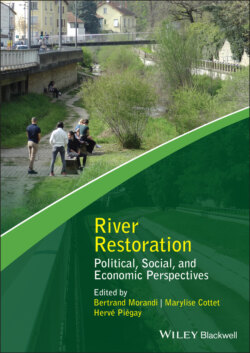Читать книгу River Restoration - Группа авторов - Страница 27
Box 1.3 Documentation sources: material that is little valued in river restoration research
ОглавлениеWhile documentation sources are often used in societal studies, they are rarely mobilized as foundational materials for research work. They are most often complementary to survey methods (e.g. Buijs 2009; Barthélémy and Armani 2015; Heldt et al. 2016; Druschke et al. 2017), to provide elements of interpretation, confirmation, or discussion of the information obtained during interviews. The nature of the documents is often little discussed and the methods of their analysis are rarely explained; they are most often qualitative.
However, document sources are valuable for providing information on river restoration projects. The most used are policy documents or administrative documents produced by national, regional, or local administrations, and operational documents related to projects (planning documents, technical reports, and communication documents). These documents contain technical and scientific information that (for example) has contributed to the inventories of projects carried out by environmental scientists to evaluate restoration practices and their effects on river ecology since the 2000s (e.g. Bernhardt et al. 2007). The bibliographical study shows that these documents are also more mobilized to answer the societal questions raised by river restoration approaches. For example, operational documents are sources providing data on project costs for economic studies (e.g. Alam 2008; Carah et al. 2014; Langhans et al. 2014). Above all, they provide key material for understanding the political processes at work in restoration processes (e.g. Tanaka 2006; Gerlak et al. 2009; Lee and Choi 2012; Guerrin 2015). Their analysis makes it possible to trace the genealogy of a restoration project and to identify the role played by the various stakeholders in its implementation, their positions in a political sense, and their strategies for action. Some studies, less numerous, focus more specifically on how public opinion reacts to certain river restoration approaches (e.g. Bark et al. 2016; Heldt et al. 2016; Druschke et al. 2017). For this purpose, they mobilize other documentation sources, such as the news media and particularly the press.
